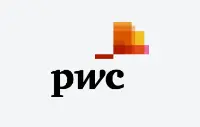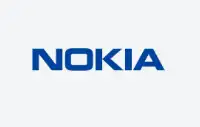- Our industry reports combine the collective power of trusted data, expert knowledge and advanced technology to deliver intelligence on a global scale.
- Aerospace and Defense
- Agriculture and Forestry
-
Apparel
- SubTheme title
- Accessories
- Clothing
- Footwear
- Sportswear
-
Automotive
- SubTheme title
- Future Mobility
- Vehicle Manufacturing
- Business and Consumer Services
-
Construction
- SubTheme title
- Construction
- Construction Projects
- Consumer
-
Financial Services
- SubTheme title
- Fintech
- Insurance
- Payments
- Retail Banking and Lending
- Wealth Management
- Foodservice
-
Medical Devices
- SubTheme title
- Anesthesia and Respiratory Devices
- Cardiovascular Devices
- Dental Devices
- Diabetes Care Devices
- Diagnostic Imaging
- Drug Delivery Devices
- ENT Devices
- General Surgery
- Healthcare IT
- Hospital Supplies
- In Vitro Diagnostics
- Nephrology and Urology Devices
- Neurology Devices
- Ophthalmic Devices
- Orthopedic Devices
- Patient Monitoring
- Specialized Sectors
- Wound Care Management
-
Mining
- SubTheme title
- Commodity
- Mining Equipment
- Mines and Projects
-
Oil and Gas
- SubTheme title
- Downstream
- Midstream
- Petrochemicals
- Services
- Upstream
- Oil and Gas Projects
- Packaging
-
Pharmaceuticals
- SubTheme title
- Cardiovascular
- Central Nervous System
- Dermatology
- Ear Nose Throat Disorders
- Gastrointestinal
- Genetic Disorders
- Genito Urinary System And Sex Hormones
- Hematological Disorders
- Hormonal Disorders
- Immunology
- Infectious Disease
- Male Health
- Metabolic Disorders
- Mouth and Dental Disorders
- Musculoskeletal Disorders
- Non Malignant Disorders
- Nutritional Disorders
- Oncology
- Ophthalmology
- Other Diseases
- Respiratory
- Toxicology
- Women's Health
- Power
- Retail
- Sport
-
Technology
- SubTheme title
- ICT
- Industry Verticals
-
Telecommunications
- SubTheme title
- Telecom Infrastructure
- Telecom Services
-
Transportation, Infrastructure and Logistics
- SubTheme title
- Transport Infrastructure
-
Travel and Tourism
- SubTheme title
- Destinations
- Lodging
- Niche Tourism
- Passenger Transportation
- Travel Services
- With our unique thematic scoring methodology and cross-sector coverage, our thematic reports provide in-depth data, insight, and analysis needed to decode the future.
- Consumer Trends
- ESG
- Industry
- Macro
- Regulation
-
Technology
- SubTheme title
- 3D Printing
- Advanced Materials
- Artificial Intelligence
- Batteries
- Big Data
- Blockchain
- Cloud
- Connectivity
- Cybersecurity
- Digital Media
- Digitalization
- Ecommerce
- Edge Computing
- Edtech
- Future of Work
- Gaming
- Industrial Automation
- Internet of Military Things
- Internet of Things
- Metaverse
- Mobile
- Quantum Computing
- RegTech
- Robotics
- Social Media
- Space Economy
- Telecom Convergence
- Geography
- Asia-Pacific asia-pacific
-
Europe
europe
- Europe
- Eastern Europe
- Western Europe
- Global global
-
Middle East and Africa
middle-east-and-africa
- Middle East and Africa
- Africa
- Middle East
-
North America
north-america
- North America
- Bermuda
- Canada
- Greenland
- Mexico
- United States
-
South and Central America
south-and-central-america
- South and Central America
- Caribbean
- Central America
- South America




























